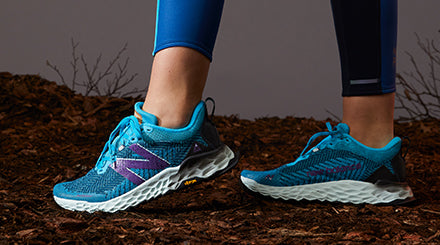
Guide to Proper Arch Support
As you very well know, shoes do not come as "one size fits all." This applies to the length and width but, what many people fail to consider, is that it also applies to the provided arch support. To help you determine what your foot specifically needs, we've provided a guide below.
Common devices used to provide proper support to your feet have many different names including arch supports, orthotics, inserts, arch cushions, and insoles.
There are several types of support available depending on the reasons it is needed. Common causes include:
- The feet are not providing sufficient protective padding to the heels or arches. Hence, extra cushioning is required.
- The natural curve of the foot arch is somewhat abnormal. Therefore, corrective support is necessary to change its shape.
- Diabetics often need insoles, as the disease can cause inadequate circulation to the feet that can lead to discomfort and even medical complications. Some insoles are designed to help improve blood blow.
- Runners and other athletes typically need extra shock absorption to protect their feet from pounding various surfaces, including concrete pavement, sidewalks, asphalt tracks and rough, natural terrain.
The following is a short guide describing four different types of arch supports for the feet.
Orthotics (Arch Supports):
Orthotics, also known as arch supports or inserts, are the most popular type of insoles available on the market. Rigid and stiff by design, orthotics have varying degrees of padding. All inserts have reinforced arches specially designed to keep an individual's arches in the correct position. When you walk, your natural arches actually collapse. If they collapse too much, small tendons and/or muscles of the heels can tear, leading to a common condition referred to as plantar fasciitis.
Wearing improperly fitting shoes and/or sandals can seriously exacerbate this foot condition. Rigid arch supports need to be quite stiff in order to prevent the impact of your body weight from collapsing the arches of your feet. As a result, orthotics are often initially quite uncomfortable to wear. It is recommended that the length of time orthotics are worn each day should be gradually increased. After a few weeks, you won't even notice them. While brands like Vionic Shoes provide a variety of footwear with the built-in structure, transferable insoles from Lynco can be used to enhance ordinary shoes.
Depending on the severity of your plantar fasciitis, arch supports are available for purchase either over-the-counter or custom made by prescription from a licensed foot specialist or podiatrist.
Arch Cushions:
If your arch problem is less severe, arch cushions are another option. They tend to have the same shape as orthotics. Rather than having a rigid arch insert, foam padding is utilized as the arch support. Hence, arch cushions are ideal for those who find orthotics too stiff and uncomfortable.
Cushion Insoles:
Designed strictly for extra foot comfort, cushion insoles have a certain amount of arch padding as well as heel shock absorption properties to keep your feet feeling more comfortable, especially if you tend to spend long hours on your feet. They provide good support, promote better circulation, and help keep the feet cool. Check out our Metatarsal section to browse various padding options.
Sports Insoles:
Sports insoles are engineered with the specific needs of athletes and/or runners in mind. Long distance runners require additional heel- to-toe rolling action as well as extra padding in the heel areas of their running shoes.
Cyclists need sports insoles that fit into smaller biking shoes easily and breathe well. Hikers are another group that can benefit from additional padding and arch support. These days, there are insoles manufactured for virtually every type of sports activity.
